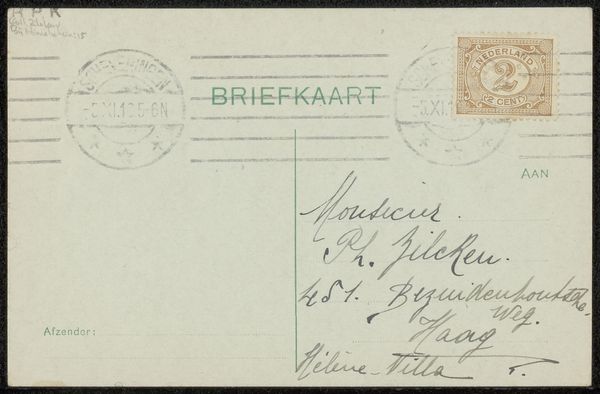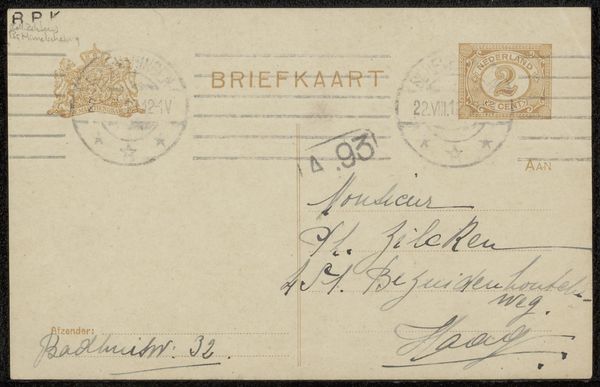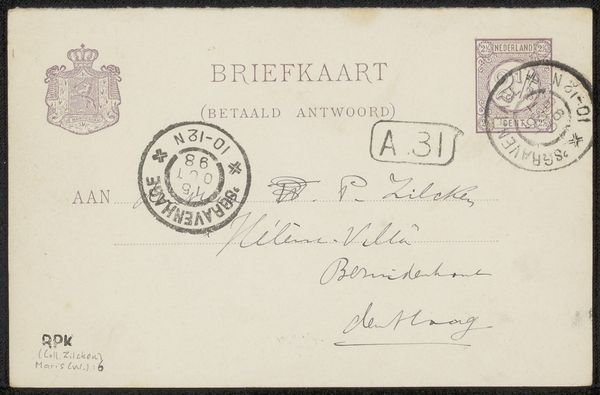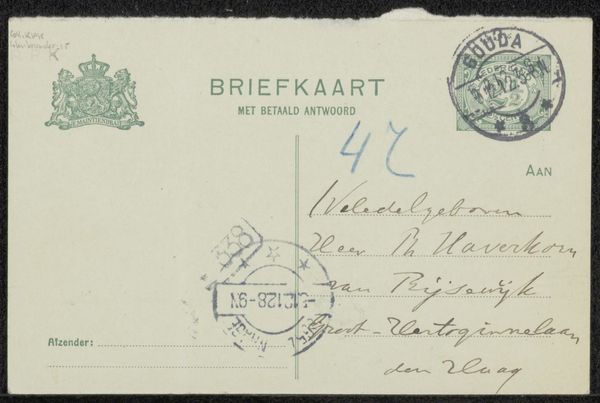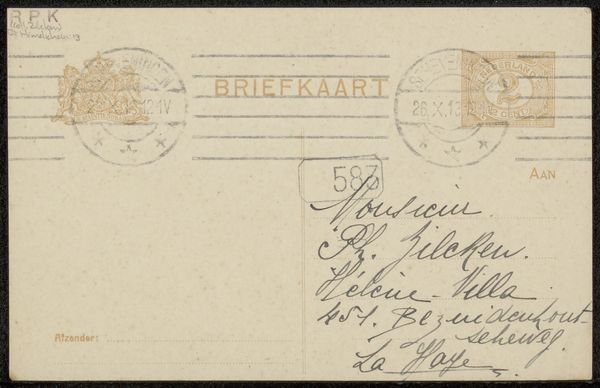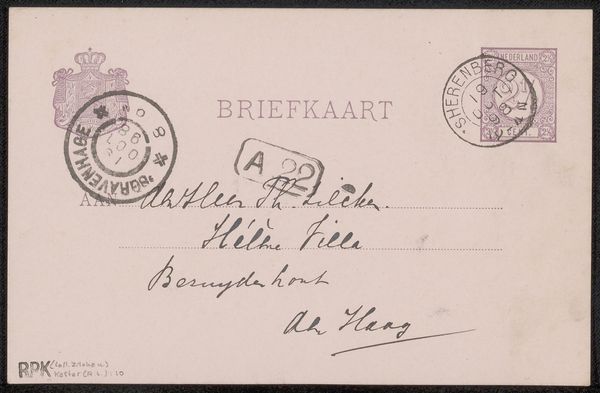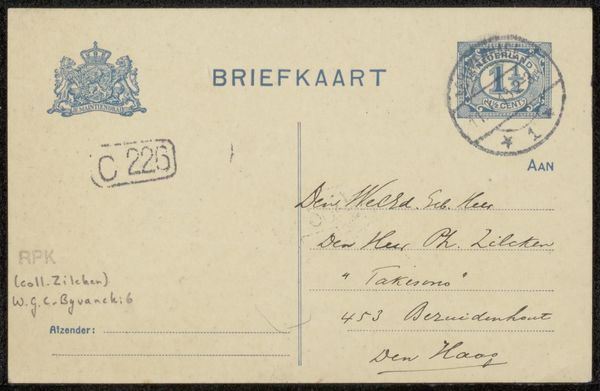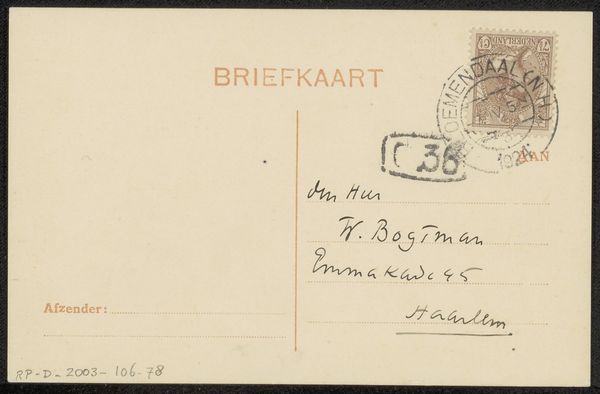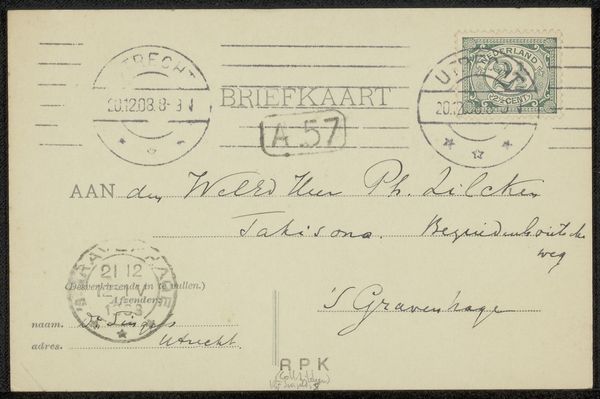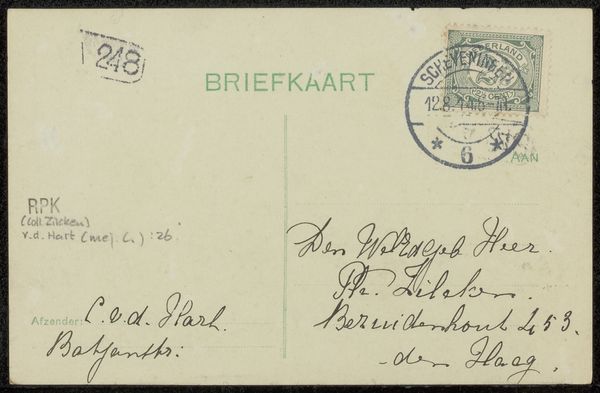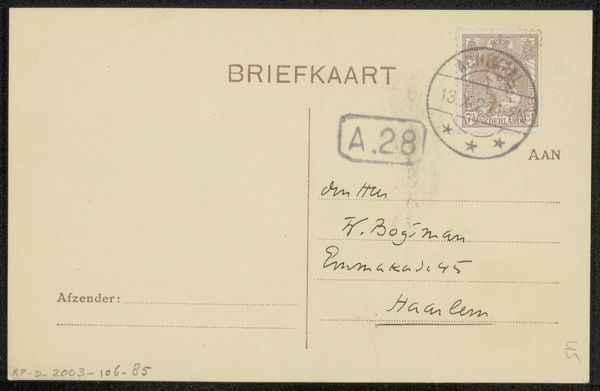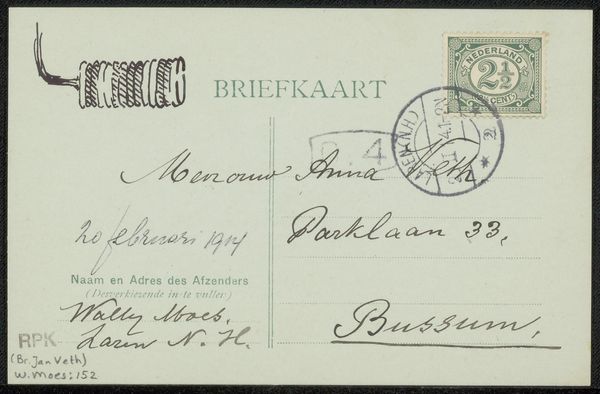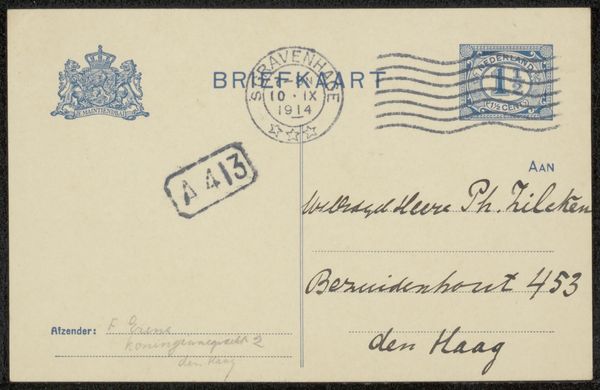
paper, ink, pen
#
comic strip sketch
#
pen sketch
#
paper
#
personal sketchbook
#
ink
#
idea generation sketch
#
sketchwork
#
ink drawing experimentation
#
pen-ink sketch
#
sketchbook drawing
#
pen
#
storyboard and sketchbook work
#
sketchbook art
#
calligraphy
Copyright: Rijks Museum: Open Domain
Curator: Here we have “Briefkaart aan Philip Zilcken,” possibly dating back to 1914, by Suze Groshans. It’s rendered in ink on paper. What strikes you first? Editor: It whispers a forgotten connection. The stamp, the handwritten address...it feels intensely personal. The texture of time, captured in faded ink, right? Like a tangible memory unearthed. Curator: Indeed. Postcards served as vital communication during that era. Consider this a quick yet intimate message sent to Philip Zilcken. It provides insight into the culture and relationships of the early 20th century. Editor: Totally. The almost casual handwriting... Was it a dear friend, a fleeting acquaintance? This one-and-a-half cent stamp suggests it wasn’t across oceans. So intimate, not quite ephemeral… Curator: Handwriting itself functioned as a symbol. The script indicates literacy, social standing, and even personality. Moreover, stamps can convey stories – production history, governmental symbols, even socio-political intentions through selected emblems. Editor: Absolutely. It’s fascinating how an everyday item became a time capsule! Today a hasty Instagram post... back then, this beautiful calligraphic message carried weight. You feel its worth, even. The physicality connects you so directly to its story, versus scrolling on your phone. Curator: It highlights a slower time when physical correspondence held cultural value beyond merely exchanging information. Think, for instance, the circles used to indicate posting— now a decorative motif of stars and a barely legible date: symbolic echoes within mundane communication. Editor: This makes me think, everything has the potential to become an antique – or some piece to be observed like art - it merely awaits enough passing time for perspectives to shift. Groshans gives us access to that perspective, if we choose to slow down ourselves. Curator: A fine thought, this unassuming piece offers us glimpses into not only personal history, but communication itself! Editor: Well, it got me thinking— and that’s what it's all about.
Comments
No comments
Be the first to comment and join the conversation on the ultimate creative platform.
